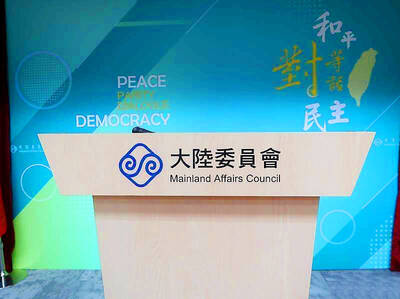More than a month after the 921 earthquake, the National Science Council (NSC) has completed a detailed map of the Chelungpu fault (
Highly anticipated by building contractors, the map of the Chelungpu fault, which has been drawn to a 1:5,000 ratio, was produced by 21 academics who have been conducting field investigations since the earthquake.
At the time of the quake, the most precise fault maps available were those of a 1:100,000 ratio, while the official one available from the Central Geological Survey (CGS) was of a 1:500,000 ratio.
"The NSC's newly produced Chelungpu fault map will be useful in considering rebuilding plans because construction prohibition zones and restricted zones can be identified by referring to it," Huang Chi-yue (
Huang said it would be easy to tell how far the fault is from damaged structures if CPA officials are making administrative maps of townships along the Chelungpu fault using the same scale as that of the NSC map.
"However, to better identify permanent prohibited zones and restricted zones along the fault, geologists have been given a tougher job -- producing a map of the same fault with a 1:1,000 ratio. This more detailed map should be completed by Dec. 15," he said.
NSC director Huang Chen-tai (
The 1:1,000 map, he added, would present the recorded geologic characters of the fault and would become an excellent reference to other thrust faults in western Taiwan.
Huang said scientists had discussed how to produce a detailed overall fault map, which would be more precise than any fault maps currently in use.
One of the challenges for contractors during rebuilding will be understanding exactly where the fault line lies. The ability to pinpoint the exact location of the fault has become a contentious point between construction engineers and scientists.
Taiwan is creased with a number of fault lines and geologists have said that it is impractical, if not impossible to map out all sections of every fault line on the island. Moreover, they say that increasing the detail of maps from 1:100,000 -- the ratio used by geologists for making scientific surveys -- to 1:1,000 in an invitation for error.
Builders argue that the more detailed maps are necessary for making blueprints that have the degree of accuracy that they are familiar with.
The builders say that maps currently available do not have nearly enough detail to allow them to know with certainty if they are building the specified distance away from an active fault line.
Scientists say the priority should be producing an official fault map using a 1:25,000 ratio, a standard which has been adopted by the US, Japan and other countries.
"It's not realistic to produce precise fault maps at 1:1,000. For geologists, the difficulty is knowing exactly where the faults are, especially those deep underground," said Shih Ruey-chyuan (石瑞銓), a seismologist from National Chung Cheng University.
"Instead of relying solely on fault maps, builders should make comprehensive site inspections before they break ground on any structure," said Tsai Yi-ben (蔡義本), professor and dean of the College of Earth Sciences at National Central University.
According to one British scientist who worked in Taiwan after the quake, fault maps are an essential guide for builders.
"If detailed maps are not available at construction sites, engineers will have to deal more with local conditions," said Colin Taylor, a civil engineering professor from Bristol University.
He said that the fault maps are needed either for scientists to identify the sources and mechanism of major earthquakes or for engineers to use during construction.
Although the UK is relatively small, its geology has been studied for more than 150 years.
"The governmental British Geological Survey has produced quite detailed geological maps of the UK in various scales. The most detailed one is 1:1,000," Taylor said.
Another engineer, Dave Edge from the UK-based WS Atkins Group, an engineering consulting firm, stressed the need for accurate maps: "One cannot be sure that the law [prohibiting the building of houses closer than 15 meters from a fault line] is successful unless one knows actually where the fault lines are."

CARROT AND STICK: While unrelenting in its military threats, China attracted nearly 40,000 Taiwanese to over 400 business events last year Nearly 40,000 Taiwanese last year joined industry events in China, such as conferences and trade fairs, supported by the Chinese government, a study showed yesterday, as Beijing ramps up a charm offensive toward Taipei alongside military pressure. China has long taken a carrot-and-stick approach to Taiwan, threatening it with the prospect of military action while reaching out to those it believes are amenable to Beijing’s point of view. Taiwanese security officials are wary of what they see as Beijing’s influence campaigns to sway public opinion after Taipei and Beijing gradually resumed travel links halted by the COVID-19 pandemic, but the scale of

TRADE: A mandatory declaration of origin for manufactured goods bound for the US is to take effect on May 7 to block China from exploiting Taiwan’s trade channels All products manufactured in Taiwan and exported to the US must include a signed declaration of origin starting on May 7, the Bureau of Foreign Trade announced yesterday. US President Donald Trump on April 2 imposed a 32 percent tariff on imports from Taiwan, but one week later announced a 90-day pause on its implementation. However, a universal 10 percent tariff was immediately applied to most imports from around the world. On April 12, the Trump administration further exempted computers, smartphones and semiconductors from the new tariffs. In response, President William Lai’s (賴清德) administration has introduced a series of countermeasures to support affected

Pope Francis is be laid to rest on Saturday after lying in state for three days in St Peter’s Basilica, where the faithful are expected to flock to pay their respects to history’s first Latin American pontiff. The cardinals met yesterday in the Vatican’s synod hall to chart the next steps before a conclave begins to choose Francis’ successor, as condolences poured in from around the world. According to current norms, the conclave must begin between May 5 and 10. The cardinals set the funeral for Saturday at 10am in St Peter’s Square, to be celebrated by the dean of the College

CROSS-STRAIT: The vast majority of Taiwanese support maintaining the ‘status quo,’ while concern is rising about Beijing’s influence operations More than eight out of 10 Taiwanese reject Beijing’s “one country, two systems” framework for cross-strait relations, according to a survey released by the Mainland Affairs Council (MAC) on Thursday. The MAC’s latest quarterly survey found that 84.4 percent of respondents opposed Beijing’s “one country, two systems” formula for handling cross-strait relations — a figure consistent with past polling. Over the past three years, opposition to the framework has remained high, ranging from a low of 83.6 percent in April 2023 to a peak of 89.6 percent in April last year. In the most recent poll, 82.5 percent also rejected China’s